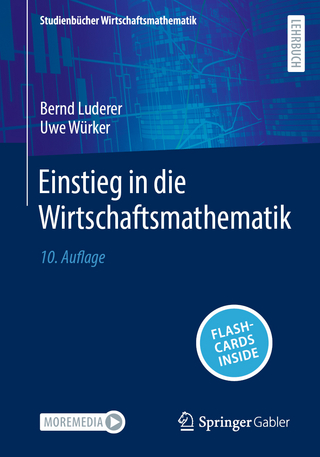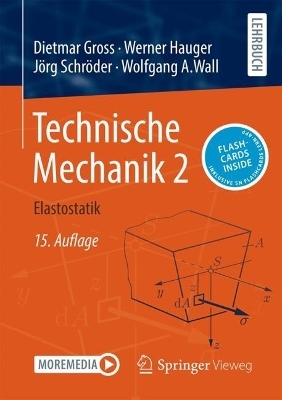
Quantum Computing Strategy
Chapman & Hall/CRC (Verlag)
978-1-032-29914-3 (ISBN)
- Noch nicht erschienen (ca. Februar 2025)
- Versandkostenfrei
- Auch auf Rechnung
- Artikel merken
The book blends business perspective with scientific rigor. It is split into two parts. The first section explains the foundational technical concepts covering quantum mechanics principles that enable quantum technologies, key quantum algorithms, mathematical concepts, quantum computing technologies, post-quantum cryptography, types of problems quantum computers solve, and the technology outlook. The second section covers practical applicability providing industry use case examples, how to approach quantum computing problems, explains how to map use cases to quantum computing, the responsible use of quantum computing, and details a roadmap for businesses to prepare for quantum adoption. This structured approach equips readers with the knowledge and tools needed to integrate quantum computing into their strategic planning effectively.
Quantum Computing Strategy: Foundations and Applicability is an essential reference for technology enthusiasts, business leaders, policymakers, and educators seeking to understand the benefit quantum computing brings for enterprises. It is designed to be a self-contained learning resource.
Elena Yndurain is a high-tech executive and professor expert in operationalizing innovation. She holds a PhD in Telematics Engineering focused on AI, an Executive MBA, B.Sc. in CS and Math. She has worked internationally in consulting, technology, multilateral banking, and software start-ups.
Section I: Foundations
Chapter 1: Key Concepts
1.1 Quantum Information
1.2 Quantum Properties
1.3 Mathematical Definitions
Chapter 2: Quantum Computers Overview
2.1 Analog and Digital Quantum Computers
2.2 Quantum Computer Simulators
2.3 Qubit Modalities Definitions
2.4 Different Qubit Topology
Chapter 3: Quantum Programming
3.1 Circuits Definition
3.2 Gates Functioning
3.3 Circuit Requirements
3.4 Programming Tools
Chapter 4: Quantum Algorithms Overview
4.1 Hybrid Approach
4.2 Software Approach
4.3 Hardware Approach
4.4 Quantum Inspired Algorithms
4.5 Algorithm Performance
4.6 Algorithm Noise
Chapter 5: Algorithms Foundations
5.1 Grover Unstructured Search
5.2 Shor Number Factorization
5.3 Deutsch–Jozsa Oracle
5.4 Bernstein–Vazirani Decode
5.5 Harrow–Hassidim–Lloyd Linear Solvers
5.5 Quantum Metropolis Equilibrium
Chapter 6: Applied Algorithms
6.6 Variational Quantum Eigensolver (VQE)
6.7 Quantum Amplitude Estimation (QAE)
6.8 Quantum Approximate Optimization Algorithm (QAOA)
6.9 Quadratic Unconstrained Binary Optimization (QUBO)
6.10 Quantum Differential Equation (QDE)
6.11 Quantum artificial intelligence (QAI)
6.12 Algorithms Interrelation
Chapter 7: Problem Categorization
7.1 Chemical Processes
7.2 Objective Optimization
7.3 Probabilistic Simulation
7.4 Artificial Intelligence
Chapter 8: Quantum Computing Risk
8.1 Quantum Cryptographic Schemes
8.2 Quantum-secure Cryptography QKD
8.3 Post-quantum cryptography algorithms
8.4 Quantum Safety Strategy Plan
8.5 Security Use Cases
Chapter 9: Technology Adoption Outlook
Section II: Applicability
Chapter 10: Aerospace
10.1 Use Case: Engine Design
10.2 Use Case: Air Cargo Load
10.3 Use Case: Irregular Operations
10.4 Use Case: Flight Climb
Chapter 11: Agriculture
11.1 Use Case: Efficient Fertilizers
11.2 Use Case: Seed Biology
11.3 Use Case: Weather Forecast
11.4 Use Case: Improved Crop Yield
Chapter 12: Automotive
12.1 Use Case: EV Batteries / Fuel cells
12.2 Use Case: Transport Routing Flow
12.3 Use Case: Object Detection
12.4 Use Case: Aerodynamic Design
Chapter 13: Chemicals
13.1 Use Case: Understanding molecular properties
13.2 Use Case: Design of Aggregates
13.3 Use Case: Crystal Structure
13.4 Use Case: Chemical Reactions Catalysts
Chapter 14: Energy
14.1 Use Case: Reservoir Simulation
14.1 Use Case: Energy Unit Commitment
14.2 Use Case: Smart-grid Operation
14.3 Use Case: Gas Turbine Design
Chapter 15: Finances
15.1 Use Case: Portfolio Management
15.2 Use Case: Fraudulent Transactions
15.3 Use Case: Product Pricing Accuracy
Chapter 16: Government
16.1 Use Case: Carbon Capture Sustainability
16.2 Use Case: Transport Efficiency
16.3 Use Case: Satellite Imaging
16.4 Use Case: Military Operations
Chapter 17: Healthcare life sciences
17.1 Use Case: Drug Candidates
17.2 Use Case: Medical Imaging
17.3 Use Case: Protein Pathology
17.4 Use Case: Drug Toxicity
Chapter 18: Manufacturing
18.1 Use Case: Improving Materials
18.2 Use Case: Assembly Line Flow
18.3 Use Case: Predictive Maintenance
18.4 Use Case: Components Performance
Chapter 19: Supply Chain
19.1 Use Case: Energy Delivery
19.2 Use Case: Load Optimization
19.3 Use Case: Just-in-time Logistics
19.4 Use Case: Demand Forecast
Chapter 20: Telecommunications
20.1 Use Case: Radio Access
20.3 Use Case: Network Planning
20.3 Use Case: Service Quality
20.4 Use Case: MIMO Spectrum Efficiency
Chapter 21: Use case problem mapping
Chapter 22: How to get quantum ready
Chapter 23: Responsible technology use
| Erscheint lt. Verlag | 28.2.2025 |
|---|---|
| Zusatzinfo | 31 Tables, black and white; 153 Line drawings, black and white; 153 Illustrations, black and white |
| Sprache | englisch |
| Maße | 156 x 234 mm |
| Themenwelt | Mathematik / Informatik ► Informatik |
| Mathematik / Informatik ► Mathematik ► Angewandte Mathematik | |
| Wirtschaft ► Betriebswirtschaft / Management | |
| Wirtschaft ► Volkswirtschaftslehre | |
| ISBN-10 | 1-032-29914-2 / 1032299142 |
| ISBN-13 | 978-1-032-29914-3 / 9781032299143 |
| Zustand | Neuware |
| Haben Sie eine Frage zum Produkt? |
aus dem Bereich


